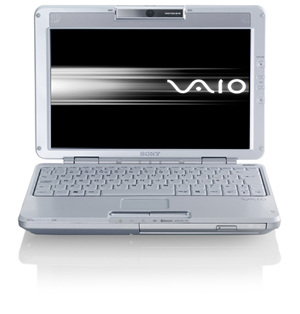Sony VAIO TR1: a first look

If Sony's new VAIO PCG-TR1 series evokes some déjà vu, you're not wrong. This 1.4kg ultraportable Centrino notebook resembles two other systems -- the Fujitsu LifeBook P series (available in the US but not yet in Europe) and Sony's discontinued C series.

The VAIO TR1's 27cm wide by 18.8cm deep by 3.47-3.58cm high case reminds us distinctly of the LifeBook P, especially since both offer internal DVD/CD-RW drives. But while the Fujitsu's drive is conveniently swappable with other modules, such as a secondary battery, the VAIO TR1's drive is fixed. As with the C series, Sony embeds a tiny VGA-resolution camera that swivels above the VAIO TR1's 10.6in. TFT display.
Speaking of the display, we're curious to see whether its new Onyx Black technology, which Sony claims enhances both brightness and contrast, makes for a superior viewing experience. We'll find out in our full review, coming later this summer.
We're also curious to know if the VAIO TR1's Centrino technology, which includes an ultra-low-voltage 900MHz Pentium M processor, will boost performance and battery life as it has on other notebooks and tablets. We're already sure of one thing: the VAIO TR1 has Sony written all over it. It sports several of the company's trademarks, including a Memory Stick slot, an i.LINK (a.k.a. FireWire) port, and a heap of Sony's own multimedia software, such as PictureGear Studio. You also get built-in Bluetooth as well as 802.11b wireless networking.
At first glance, all of this yields a great-looking, highly portable notebook with some unique features. But is the TR1 still too small to be usable for many travellers? We'll answer that question in our upcoming review.